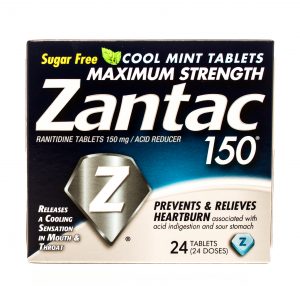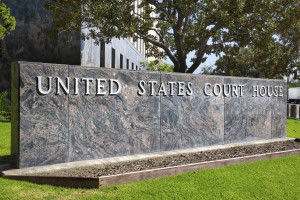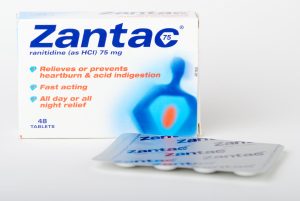 After news broke that Zantac (the brand name for ranitidine) was linked to cancer, a large wave of lawsuits started making their way into state and federal courts. Many of these cases have been consolidated into the Zantac multi-district litigation, or MDL 2924.
After news broke that Zantac (the brand name for ranitidine) was linked to cancer, a large wave of lawsuits started making their way into state and federal courts. Many of these cases have been consolidated into the Zantac multi-district litigation, or MDL 2924.
The Zantac MDL is still in the early stages of litigation, but the court just handed down two major decisions that could dramatically undermine a majority of the cases and claims.
We’ll go over these two decisions, but before we do, we need to provide a little context. We’ll start with outlining the defendants and claims in the Zantac MDL, then discuss a legal concept called “preemption.”
The Defendants in the Zantac MDL
There are five main groups of defendants in the Zantac MDL:
- Brand-Name Manufacturers of Zantac
- Generic Manufacturers of Ranitidine
- Distributors of Ranitidine Products
- Retailers of Ranitidine Products
- Repackagers of Ranitidine Products
To learn more about each of these defendants, you can check out my blog post, Zantac Litigation Master Complaint Key Points, Part 1: The Parties Involved.
The Allegations in the Zantac MDL
The plaintiffs in the Zantac MDL set out their allegations in the following three master complaints:
- Master Personal Injury Complaint (MPIC)
- Consolidated Consumer Class Action Complaint (CCCAC)
- Consolidated Third Party Payor Class Complaint (CTPPCC)
There is a fair amount of overlap concerning the overall gist of the allegations in these complaints. Causes of action among the complaints include various strict products liability claims, as well as claims relating to negligence, breach of warranties, violations of consumer-protection laws, violation of the Magnuson-Moss Warranty Act, and derivative claims (like loss of consortium and wrongful death).
The MPIC and CCCAC include both the generic manufacturers and repackagers of ranitidine as defendants. The CTPPCC includes generic manufacturers of ranitidine as defendants, but not repackagers of ranitidine.
After these complaints were filed, the generic manufacturer and repackager defendants (collectively, Generic Defendants) filed a motion to dismiss and the retailer and distributor defendants (collectively, Retailer Defendants) filed two motions to dismiss.
On December 31, 2020, the Zantac MDL court granted the Generic and Retailer Defendants’ motions to dismiss based largely on preemption grounds. These rulings have the potential to undermine and even end a majority of the Zantac MDL plaintiffs’ claims. But what is preemption and why does it matter?
Preemption and Why It’s Kind of a Big Deal in the Zantac MDL
Preemption is the legal principle that says federal law is the supreme law of the land. In other words, when federal law conflicts with state law, federal law wins (or “controls”). Preemption sometimes comes into play when plaintiffs sue generic drug makers (and related parties, like repackagers) for injuries from their products.
Most medicines and drugs sold in the United States are subject to regulation by the U.S. Food and Drug Administration (FDA). This includes rules about labeling, safety, effectiveness, when a drug can be sold as a generic and so on. But many personal injury claims involving pharmaceuticals arise from state law.
The FDA has established very specific rules about how generic drug manufacturers can sell a name-brand drug as a generic. After a name-brand drug is approved by the FDA (including how it’s labeled) generic drug companies who want to sell that name-brand drug are limited in what changes they can make to the drug. Without getting into the nitty-gritty, a generic drug company cannot substantially alter the drug or its label, including warnings placed on the packaging.
So let’s say a plaintiff uses state law to bring a personal injury lawsuit against a generic drug company claiming it didn’t properly warn patients of the risks when taking the drug. This puts the generic drug company in an unfair situation.
The generic drug company is being sued under state law for not changing the warning label of the drug. But federal law prohibits the generic drug company from making that label change. This is a conflict between state and federal law, so preemption comes into play and dismisses the failure to warn claims based on state law.
This means that the plaintiff’s legal case against the generic drug company is often effectively over because federal law overrides state law, leaving the plaintiff with few legal options to pursue a meaningful recovery.
This is largely what happened concerning the Generic and Retailer Defendants’ motions to dismiss. Now we can take a look at each motion more closely.
The Generic Defendants’ Motion to Dismiss
In its motion to dismiss, the Generic Defendants made the majority of their arguments relying on the theory of preemption. These arguments applied, at least in part, to the following plaintiffs’ claims:
- The generic drugs had labeling and product defects.
- The Generic Defendants should have conducted more testing of their generic drugs.
- The Generic Defendants should have adjusted the expiration date of the generic drugs.
- Ranitidine should have been stored and transported differently.
- The Generic Defendants should have warned the FDA about ranitidine’s cancer risk.
- The generic drugs had a manufacturing defect.
- The Generic Defendants violated the Magnuson-Moss Warranty Act
- The Generic Defendants have absolute liability for the harm plaintiffs suffered from taking ranitidine.
- Generic Defendant’s liability has led to derivative claims, including wrongful death and loss of consortium.
 In deciding the motion to dismiss, the court sided with the Generic Defendants on every single point, largely relying on preemption. But that’s not the worst part for the plaintiffs.
In deciding the motion to dismiss, the court sided with the Generic Defendants on every single point, largely relying on preemption. But that’s not the worst part for the plaintiffs.
The worst part is that not only did the court agree to dismiss all the claims, but it agreed that many of them should be dismissed “with prejudice.” That means that those claims cannot be rewritten and refiled and are lost forever.
Often, courts will grant a motion to dismiss, but give plaintiffs an opportunity to revise and adjust their legal arguments. This is called dismissing the claims “without prejudice.”
In this scenario, a court is telling plaintiffs that their arguments will not succeed as currently presented, but the plaintiffs might be successful if they replead the same legal arguments differently in an amended complaint.
In this Zantac MDL, the court only granted this “do-over” opportunity with the following plaintiffs’ claims:
- Expiration dates
- Testing
- Storage and transportation methods
- Warning the FDA
- Manufacturing defects
- Magnuson-Moss Warranty Act
- Derivative claims
Notice what’s missing: claims concerning product and labeling defects and absolute liability. These are among the strongest claims being made by the plaintiffs in the Zantac MDL.
The Retailer Defendants’ Motions to Dismiss
There were two motions to dismiss that were decided by the court.
In the first motion to dismiss, Retailer Defendants’ arguments were very similar to the Generic Defendants. Basically, Retailer Defendants argued that preemption required the court to dismiss the bulk of plaintiffs’ claims, including:
- Absolute liability
- Misbranding of products containing ranitidine
- General negligence
- Violations of the Magnuson-Moss Warranty Act
- Derivative claims, including wrongful death and loss of consortium
Just like with the Generic Defendants’ motion to dismiss, the court largely relied on preemption to dismiss every single one of the plaintiffs’ counts against the Retailer Defendants.
The court also allowed the counts to be dismissed with prejudice, except the plaintiffs’ claims for general negligence (to the extent they do not include arguments relating to the adequacy of the ranitidine label or the design of ranitidine), derivative claims and violations of the Magnuson-Moss Warranty Act. The plaintiffs were granted leave to amend their complaints to replead these claims.
Regarding the Retailer Defendants’ second motion to dismiss, the court denied it as moot, as it was based on arguments made in the first motion to dismiss.
Now What Happens in the Zantac MDL?
The court will soon release its decision concerning the Zantac brand-name manufacturers’ motion to dismiss. This is another very important court ruling that could have major implications on the Zantac MDL moving forward.
Plaintiffs will then have 30 days after the court releases that pending decision to file their amended complaints concerning the Generic and Retailer Defendants.
But the Zantac brand-name manufacturers’ motion to dismiss also relies heavily on preemption arguments. We still believe many viable and important claims will survive against the makers of Zantac, but recent court decisions have not been kind to certain plaintiffs in the Zantac litigation.
If you believe you have been harmed by Zantac, call me: 919.546.8788.
 North Carolina Product Liability Lawyer Blog
North Carolina Product Liability Lawyer Blog


